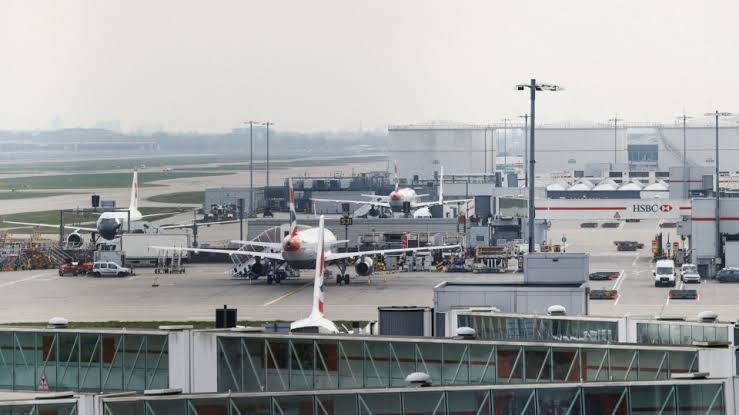Authorities Close London Airspace
London’s airspace was abruptly closed for over an hour on Wednesday, July 30, 2025, following a critical radar failure at the National Air Traffic Services (NATS) control center in Swanwick, Hampshire, grounding all departing flights and causing widespread disruption across major UK airports, including Heathrow, Gatwick, Stansted, London City, Birmingham, and Manchester. The outage, which began around 4:00 p.m. BST (5:00 p.m. WAT), paralyzed one of the world’s busiest airspaces, leaving thousands of passengers stranded and triggering cancellations and delays expected to ripple into Thursday, just before the peak global travel day of August 1.
NATS confirmed the “technical issue” in a statement on X, saying, “As a result of a technical issue at NATS Swanwick air traffic control centre, we are limiting the number of aircraft flying in the London control area to ensure safety, which is always our first priority.” By 6:30 p.m. BST, engineers restored the system, and NATS announced, “Our systems are fully operational and air traffic capacity is returning to normal.” However, the brief 20-minute radar failure caused chaos, with aviation analytics firm Cirium reporting 45 departures and 35 arrivals canceled across UK airports by 5:30 p.m. BST, including 16 departures and seven arrivals at Heathrow alone. Over 16 flights en route to Heathrow were diverted to Frankfurt, Brussels, and Paris CDG, while easyJet flights from Naples, Kefalonia, and Corfu landed in Switzerland.
Heathrow, the world’s busiest two-runway airport, saw its departure board go blank, with no flights listed during the shutdown. Gatwick, the planet’s busiest single-runway airport, grounded all departures, while Edinburgh Airport reported holds on outbound flights. Eurocontrol, the EU-wide air traffic agency, labeled the London control area “temporarily unavailable,” with FlightRadar24’s live map showing a near-empty airspace over southern England, a stark contrast to its usual 3,080 daily departures carrying over 577,000 passengers. Passengers like John Carr, a chiropodist from Stourbridge, faced heartbreak, telling The Independent, “I’m the best man at my brother’s wedding in Norway, but my Heathrow flight was canceled.” Others, like Durand Meachem from North Carolina, were stuck at Heathrow, awaiting a 10:30 p.m. flight delayed by hours.
The outage drew fierce criticism, with Ryanair’s COO Neal McMahon calling for NATS CEO Martin Rolfe’s resignation, stating, “No lessons have been learnt since the August 2023 outage that disrupted 700,000 passengers.” The Liberal Democrats echoed the sentiment, with leader Sir Ed Davey declaring, “It’s utterly unacceptable that air traffic control has been hit again. Passengers deserve better.” Transport Secretary Heidi Alexander acknowledged the disruption, posting on X, “Systems have been restored, but continued disruption is expected. Passengers should check with airlines.” The UK National Cyber Security Centre ruled out a cyberattack, confirming the issue as a technical fault, though NATS is investigating the exact cause.
Travel expert Simon Calder described the meltdown as “an unbelievable trauma” for UK aviation, noting that even a short outage in London’s congested airspace causes cascading delays. Passengers reported being stuck on tarmacs for hours, with one, Gurminder, tweeting, “No departures from Heathrow for 40 minutes. The radar isn’t working, but the crew is fabulous.” Consumer group Which? noted that the radar failure qualifies as an “extraordinary circumstance,” making compensation unlikely, though airlines must provide care like meals and accommodations.
The timing, at the start of the school summer holidays, amplified the chaos. Social media buzzed with frustration, with @rawsalerts posting, “London airspace closed! Total chaos at Heathrow and Gatwick,” and @LBCNews sharing images of stranded passengers. The incident follows a pattern of NATS disruptions, including a 2014 computer glitch and a 2023 outage, prompting calls for urgent reforms to bolster system resilience.
